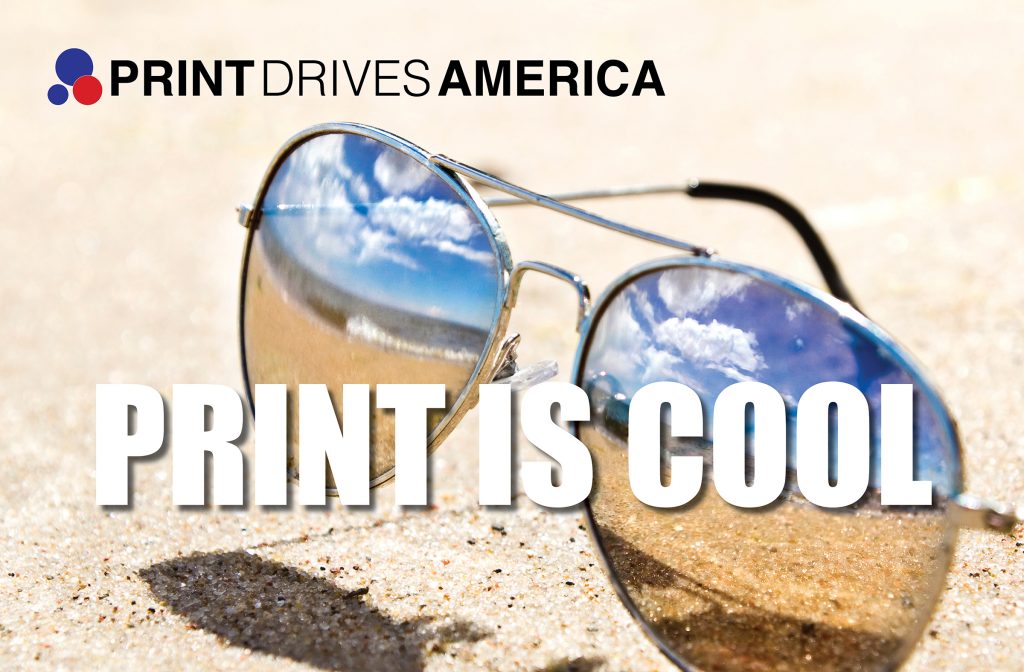
We live in a digital world. This leads many to ponder, has digital dependence made print irrelevant? Not one bit. Devices are smarter, delivery is faster, everything is more tech-driven and the whole shebang is more connected. And so, we’ve wound up with an increased focus placed on digital-driven tactics and marketing strategies. But that has created grossly oversaturated digital channels. The end result? Media-bombarded consumers who are resistant to marketing messages.
The revival of print in the digital age
While we use digital communications more and more for everyday interactions, some products and experiences just can’t be digitized and in that rests the importance of print marketing. There’s a plethora of research that finds a significant difference between communicating through tangible, printed materials and communicating through digital means. The proof is in the data:
- Easier to comprehend
- Minds are less likely to wander
- Has nearly zero distractions
- Outperforms digital
- Easier to engage with content
- Retention greatly improved
- Best for training and education
Digital
- Harder to comprehend
- Triggers wandering minds
- Contains loads of distractions
- Most screens interfere with the navigation of text
- Causes stress and exhaustion
- Scrolling is mentally draining
- Readers must move + comprehend text simultaneously
In addition to all the research data findings, because our eyes are mostly straining to look at screens for hours on end for work alone, the joy of printed material becomes much more appealing. Since early 2020, lockdowns and isolation has further promoted the increasing dependency on our digital devices making people crave authenticity and a human connection – and print marketing is just the thing that helps make brand connections in a tangible and memorable way.
The “in-thing” for Millennials
Workplaces today have computers throughout, and companies rely heavily on cloud services. Yet many industries still depend on print media for marketing, communication and other important functions like training and education. And let’s not forget about print’s appeal when it comes to generations younger than Boomers and Gen Xers. Today, Millennials are the largest generation in America’s workforce and it’s predicted by 2025 they will comprise 75 percent of the global workforce. Fortunately, print is becoming increasingly popular with them and subsequent generations. When thinking of Millennials and Gen Zers, most conjure up images of folks glued to their phones, however, data shows print media holds an important place in their day-to-day lives.
Studies show that Millennials spend more time reading their mail than any other generation. Adweek reports that 92% of college students prefer reading printed materials to digital material. Even generations that grew up in a digital world are not nearly as print-adverse as people may think. In fact, while all generations have gravitated to more and more online shopping, at the same time, everyone – regardless of birth year – is much more likely to trust information in print media versus that published in digital formats.
With the sheer volume of information overload at the digital level, print media separates companies and brands from the crowd. Print materials are seen more because they are seldom ignored and not deleted as we so often do with digital content. Print advertising also provides a broader customer experience, one that allows for a deeper level of engagement than that of fleeting, digital stuff.
Cool defined: fly, swank, chic, mod
To mark the significance of print and promote the use of it, Print Drives America Foundation’s national advocacy initiative includes a “PRINT IS COOL” ad that helps get the word out about the digital fatigue that is upon us and how print media like direct mail and advertising inserts are preferred over the interruption of digital advertising. Their message is simple and to the point: Print is cool, and yes, all ages really like the enhanced experience of printed products! Files for the ads are available to all, printers, vendors and publications. The ads may be customized with their own company signatures. Visit pialliance.org/print-drives-america-foundation/ to download files. Posters and mailing pieces are also available.
The takeaway
While digital connections escalate, so does scroll fatigue. Print can provide an opportune and much-needed screen break that effectively complements and strengthens marketing campaigns. There’s no question print marketing is still cool after all these years. Things like direct mail, product inserts, specialty packaging, displays and promotional products – when used in conjunction with digital touchpoints – can help amplify a brand’s reach. It’s an ideal time to recognize the crucial role that print media plays in every aspect of life and take advantage of the various ways it can be used to promote company and business initiatives in a way that’s more intriguing, captivating and readily absorbed.